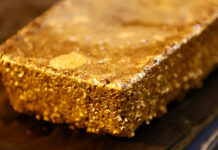
AN anticipated recovery in the shares of Sibanye-Stillwater is yet to materialise after the company sank to a level last seen about two-and-a-half years ago.
On May 21, Goldman Sachs published a note in which it said the sell-off in Sibanye-Stillwater shares was partly related to concerns about its balance sheet. The fear is that the cost of having bought Stillwater Mining, coupled with a reduced rand gold price, could see the company issue shares for cash.
There were also concerns regarding seismic activity which resulted in the deaths of six miners at its Driefontein mine whilst a 40% wage hike demand from unions also suggest the negotiations are set to be tough and possibly prolonged. Goldman Sachs, however, has put a buy on Sibanye-Stillwater shares with a target price of R18/share.
Today, though, the company traded at about R7.55/share which compares to R11.46/share a month ago, a decline of 33%. The last time the share was so low was in October 2015. But Goldman Sachs said there was no risk of Sibanye-Stillwater having to tap the market for funds when it could rely on lenders or a streaming deal in which it would sell a royalty in one of the minor platinum group metals, such as rhodium.
“In line with our previously published view, we believe that the company’s balance sheet is relatively safe, and that investor concerns around a possible equity raise are unfounded,” it said at the time. “We see Sibanye’s net debt/EBITDA at <2x at year-end 2018, some way below its covenant of 2.5x.”
Further seismic events, this time at Driefontein neighbour Kloof mine, which injured employees, resulted in the Association of Mineworkers & Construction Union (AMCU) accusing Sibanye-Stillwater management of negligence. Sibanye-Stillwater was due to make a further announcement about the affected areas.
BMO Capital Markets also commented that Sibanye-Stillwater may be deleted from the GDX Index in New York owing to the decline in contribution of its gold operations to less than 40% of pre-tax earnings as required by the Index. “Sibanye Stillwater will likely be deleted from GDX in the short to medium future as their gold exposure drops below the 40% index requirement. Over the years Sibanye-Stillwater has increased its exposure to PGM and this will increase even further with the potential acquisition of Lonmin,” it said.
Sibanye-Stillwater published its first quarter numbers earlier this month in which it reported a 12% quarter-on-quarter decline in gold production to 291,500 ounces. Coupled with a weaker average rand/dollar exchange rate – 11.96 in the quarter compared to an average of 13.63 in the December quarter – this led to the gold operations registering a hefty 62% slide in earnings before interest, tax, depreciation and amortisation (EBITDA).
The PGM operations performed well, especially Stillwater in the US, and helped the group to a 30% year-on-year improvement in EBITDA to R1.58m whilst net debt to EBITDA was cut to 2.4x at end-March from a net debt to EBITDA ratio of 2.6x as of December 31.











